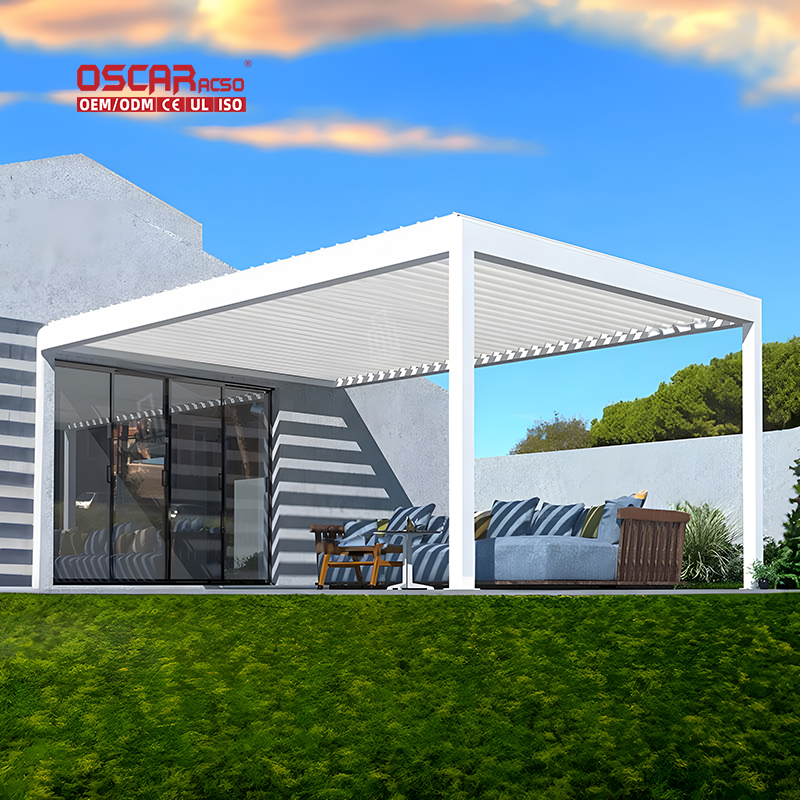Pergola\’s Linguistic Journey, Uncovering Its Global Roots and Meanings
The word \"pergola\" whispers of gardens, dappled sunlight, and elegant outdoor living 🌿. But have you ever wondered w...
The word “pergola” whispers of gardens, dappled sunlight, and elegant outdoor living 🌿. But have you ever wondered where this beautiful term comes from and how it’s used around the world? Its journey across languages and cultures is a fascinating tale of architecture, nature, and human enjoyment of space.
.jpg)
◼️ The Core Meaning: More Than Just a Garden Feature
At its heart, a pergola is an outdoor structure designed to provide shade and support for climbing plants. It typically consists of vertical posts or columns that support cross-beams and a sturdy open lattice, often upon which vines are trained.
While often used interchangeably with terms like gazebo or arbor, a key distinction lies in its purpose and construction. A pergola is primarily a passageway or a shaded area defined by its open roof structure. In contrast, a cenador (in Spanish) or arbour often implies a more enclosed, solid-roofed structure intended as a destination for staying, not just passing through, and may even include furniture.
◼️ Etymology: A Trip from Latin to Your Backyard
The linguistic journey of “pergola” is a classic example of how words travel. It originates from the Latin word “pergula,” which referred to a projecting roof, a shed, or even a balcony.
This term was adopted into Italian as “pergola” around 1645, solidifying its meaning related to garden structures and supported passages. From Italian, the word blossomed into numerous other European languages, including:
- •
English (“pergola”)
- •
Spanish (“pérgola”)
.jpg)
- •
French (“pergola”)
- •
Portuguese (“pérgola” – though a distinct word, “pérola,” means “pearl”)
Its entry into the English language is noted around 1675, showcasing its long-standing presence in our vocabulary for garden design.
◼️ Why did the word “pergola” spread so easily across languages?
Its adoption was likely seamless because it filled a specific need—naming an increasingly popular architectural feature in gardens. As the concept itself was shared and admired across cultures, the original Italian name often stuck, a common phenomenon for specialized terms.
◼️ Pergola in Various Languages: More Than a Direct Translation
While the word is remarkably consistent across many languages, its cultural connotations and specific uses can have subtle nuances.
In Spanish, “pérgola” carries a strong architectural definition, often detailed with terms like “pilares” (pillars), “vigas” (beams), and “enrejado” (lattice), emphasizing its construction. It’s deeply associated with Mediterranean outdoor living and the integration of nature and design.

In French, “pergola” evokes images of elegant gardens, often found in formal settings. It’s synonymous with leisure, ”jardin” (garden), and ”terrasse” (terrace), highlighting its role in enhancing living spaces.
It’s fascinating to see how a single structure is embraced by different cultures, yet the core idea of creating a shaded, natural retreat remains universal 🌍.
◼️ Cultural Significance: From Functional to Philosophical
The pergola isn’t just a word; it represents an idea. Historically, its precursors were functional green tunnels in medieval and early Renaissance gardens, made from woven young trees to create shaded walkways.

It became a staple in English-style naturalist gardens of the 18th and 19th centuries, celebrated for its “natural artificiality”. This reflects a cultural appreciation for designs that feel organically part of the landscape while being meticulously crafted by human hands.
Today, the pergola has evolved into a hub of modern outdoor living. It’s no longer just about shade; it’s about creating multi-functional rooms outside our homes, integrating technology, and blending indoor comfort with the beauty of the outdoors.

◼️ How has the meaning of “pergola” evolved with modern design?
It has shifted from a simple garden shade provider to a sophisticated architectural statement. Modern pergolas, especially in aluminum, feature motorized louvers, integrated lighting, and smart home connectivity, transforming them into adaptable outdoor rooms.
◼️ Personal Perspective: The Word as a Bridge
Studying the word “pergola” reveals more than etymology; it shows how we universally seek to harmonize with our environment. This single term connects a Latin builder’s technical term to an Italian gardener’s vision and now to a global homeowner’s dream of a perfect backyard oasis.
The fact that so many languages adopted the word with little change suggests that the emotion and function it represents are universally understood—a desire for beauty, shade, and a seamless blend of nature and craftsmanship. It’s a testament to how certain ideas transcend borders, and how our shared love for beautiful, functional spaces is encoded in the language we use.
The next time you say “pergola,” remember you’re invoking centuries of history, cross-cultural exchange, and a enduring human desire to create beauty in our surroundings 🏡.

